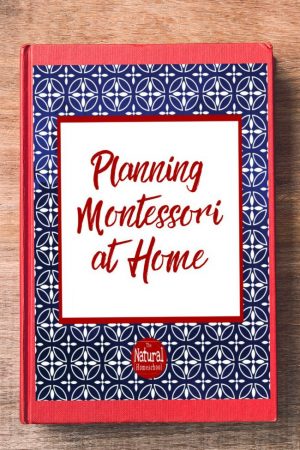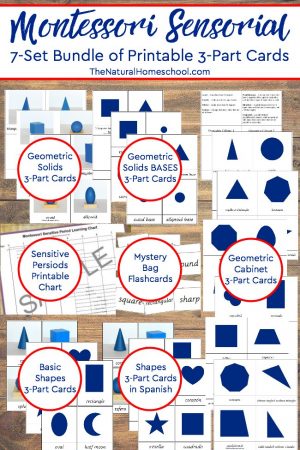What are the benefits of Montessori education? If you are reading this post about a Montessori lesson, then you already know how special of a method Montessori is.
The benefits of doing Montessori at home, at any scale (as a complement to your curriculum or as your only curriculum), the benefits are wonderful.
When I was first getting my license in Montessori ages 3-6, I traveled to different states to observe different Montessori schools.
At the time, I lived in Brazil and was working at a Montessori school there.
But I came to the United States and I made arrangement to visit Montessori schools in Texas and Oklahoma. I was surprised to see just how different the schools were, and yet, the Montessori learning part was the same.
I was also pleasantly shocked at how advanced the students were. What is unique about the Montessori curriculum? That the child is allowed to explore, retrieve, discover and so much more!
What is also unique is that The Montessori Method includes subjects like Practical Life and Sensorial. No other methods or schools teach these as a norm.
Don’t forget to visit our resources hub for Montessori lessons and printables! It is full of wonderful hands-on ideas for you to use at home.

You might be asking yourself what the deal is with this Montessori work called Fabric Box. What is so important about matching up fabric swatches?
Well, this work is much more than that.
This Montessori homeschool curriculum falls under the Sensorial category because it targets texture, feel and appearance.
Visual discrimination (color), physical discrimination (texture), coordination and fine motor skills are practiced in this work, just to name a few.
You can buy it (see options below) or you can make it on your own. Find out how here. Regardless, let’s discuss a wonderful Sensorial Montessori curriculum free fabric box tutorial.
Montessori Sensorial Materials Fabric Matching Set Montessori First Fabric Set with Box
Montessori First Fabric Set with Box Jili Online Children Kids Montessori Fabric Cloth Box Sensorial
Jili Online Children Kids Montessori Fabric Cloth Box Sensorial
Sensorial Montessori Curriculum 3-6
But first, let’s talk about what Montessori Sensorial is. Sensorial makes us think of touch, right? Touching. Smelling. Feeling. Hearing. Exploring. Observing. Concentrating.
Using all of the senses. Some Montessori Sensorial works include discriminating and comparing weight using a Montessori scale and the baric tablets.
Children can explore temperature and how different surfaces feel and retain heat using the thermic tablets.
Children can blindfold their eyes and put together a binomial cube by feeling their way through the correct progression of steps.
In short, sensorial works open up our children’s world to explore not just by looking and touching.
it is also by smelling (using smell boxes), by listening (by using sound cylinders) and even find patterns and order using the knobbed cylinders and the knobless cylinders.
To learn more about how and what to teach in the Sensorial Montessori subject, we have a really helpful planner chart for parents and guides. Find it here:
Sensorial Montessori Curriculum Free Fabric Box Tutorial
Let’s dive into our lesson at hand! This is such a fantastic work and so easy to put together.
Who ever said Montessori works had to be bulky and expensive all the time?
Not at all!
For this work, all you will need are two 5×5-inch squares in the same fabric. Find several types of textures in fabric.
I recommend getting a dozen times two, if possible.
First, have your child (ideally, ages 2.5 up to maybe 5 or 6) take out the fabric swatches out of the box and observe.
Then they feel. Talk about the vocabulary for this lesson.
Use words like soft, rough, smooth, bumpy, ribbed, etc. I prefer to begin using superlatives like smooth, smoother, smoothest and rough, rougher and roughest.

For the basic version of the Montessori Fabric Box Tutorial, the fabric swatches are mixed up and the child sorts them as he/she uses some of the vocabulary words.
The child keeps going until all the fabric swatches are paired up correctly. The control of error for our set is the color of the fabric swatches.
For a more advanced extension for the Montessori Fabric Box Tutorial, hand the child a set of blindfolds and have the child sort and pair up the fabric swatches correctly without looking.
I know it sounds like it would be hard and, at the beginning, it is, but eventually, your child will choose to only sort these using the blindfolds.
What do you think? Are you ready to get your own Fabric Box or to make your own? Don’t forget the blindfolds, too!

Montessori Planner and Montessori at Home eBook
Unlike Montessori albums, I made a Montessori homeschool planner and wrote an ebook.
lesson planner for Montessori teachers (parents that want to teach Montessori at home using Montessori materials)
-
Sale!

Montessori at Home Planner
$19.99 Add to cartQuick Buy- Sale!

Montessori at Home SUPER MEGA Printable Starter Bundle
$121.99$39.99 Add to cart- Sale!

Montessori at Home Digital Book (102 Pages)
$24.99$17.00 Add to cartThank you for visiting our Montessori Fabric Box Tutorial post! You might also like these blog posts:

Free Montessori Lesson Plans
Check our some free downloads of many Montessori printables and some other Sensorial lessons!
list
Why We Love Homeschooling Using Montessori
Montessori Sensorial: Binomial Cube (Free Printable!)
Montessori Sensorial: Baric Tablets
Montessori-Inspired “Sorting by Size with Matryoshkas” (Free Printables)
____________________________________________________________________________________________ ____________________________________________________________________________________________
____________________________________________________________________________________________ ____________________________________________________________________________________________ Sale!
Sale!
Work with Me! Personalized Coaching Sessions (Montessori & Homeschool)
$75.00$50.00Do you need homeschool or Montessori at home coaching?
We customize a package that will help YOU the most, but this is our most popular package:
Take advantage of my 15 years of experience in the Montessori philosophy and 10 years of homeschooling.
1 A 30-minute video (or phone) call via Zoom for a 100% personalized “in-person” coaching
It will be recorded and the link will be sent via email within 24 hours for further review.
Once you purchase the coaching session HERE, I will contact you to set up a time that works for both of us.
2 An email prior to coaching call detailing what questions, concerns, issues need to be addressed.
This helps with maximizing face-to-face time for actual practical implementation tips.
3 Any prior recommendations from my online shop (ebooks, etc,) are included
4 A follow-up email within 24 hours of the video call, detailing what was discussed, steps to take, any additional recommendations from my online shop (again, also included in the package).
5 A second follow-up email/contact 1-2 weeks after the video coaching call to see how client is progressing and to see if another video call needs to be scheduled
- Sale!












Leave a Reply